By Connor AKA Connor
Editor’s Note: This is Part 6 of our Command Deck Strategies Series. We also recommend:
- Part 1 on Fleet Director Nandi
- Part 2 on BioLord Walsh
- Part 3 on Overlord Newburg
- Part 4 on High Admiral Jochum
- Part 5 on Hive Admiral McCready
Introduction
One year has passed since the release of Command Decks in the Star Realms digital app. In that time, Jochum established himself as the #1 commander with win rates over 60% against other commanders, a dominating presence in tournaments, and a newbie-punishing late game. As a response, McCready rose in popularity as a prominent and easy-to-use aggressive alternative, while Walsh and Newburg stayed relevant using row scrap to deny Jochum bombs, along with their other tools.
About 6 months ago, after a lot of time and effort studying Divine Admiral Le, who was thought to be less powerful than the other commanders, a few dedicated players finally started getting some impressive results. In this article, I’ll be sharing my experience, which has been heavily influenced by these other successful players. By the end of your reading, you’ll hopefully understand not only how to approach piloting Le, but also that he is NOT a gimmick, but a force to be reckoned with.
Why Le?
You’re tired. You feel no satisfaction using a commander like Jochum, who is clearly not designed to be played alongside the other commanders. You’re tired of playing Newburg’s row scrap lottery and losing. You’re bored of McCready’s nearly mindless rushdown. Walsh’s base game doesn’t feel as late-game oriented as you wanted. And you don’t want an auto-loss against Jochum by selecting Valken.
You want to seize your own destiny – Carpe Diem. You want your deck to be an efficient machine, a nearly-blank canvas, and to have the freedom to buy off-color. Plus, you want a not-so-terrible chance to beat The Big J. You don’t mind starting the game as the underdog and having to wrestle every victory away from your opponent. In fact, that’s what gives you satisfaction. That, and sometimes making your opponent discard half their hand. Multiple turns in a row.
Le’s Starting Deck
Le starts with the usual 12 card deck, a passive and [Trash] gambit, and 64 health. In his starting deck, he has up to 9 econ and 12 damage on paper. This sounds nice and competitive with McCready’s whopping 10 econ and approximately 14 damage. But unfortunately, 4 of that 12 damage must be chosen over econ, and 1 econ comes at the cost of scrap. Realistically on deck 1 with just your starters, you’ll have 8 econ (unless you really need to reach), which is the lowest out of all commanders. If you’re lucky, you’ll also have 7 damage, down there with Nandi and Jochum for the lowest damage in deck 1. You’re a player with a discard, a scrapper, and a dream: overcome the massive gap between you and your opponent to kill them before they kill you.
Let’s take a look at the tools you have to try and pull of your mini-miracle:
Alignment Ingenuity
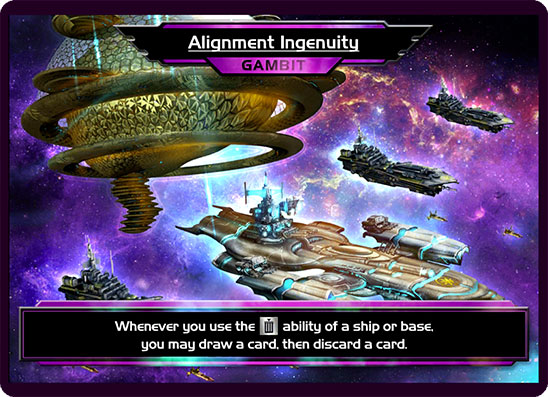
Le’s passive gambit allows him to get extra value out of [Trash] abilities by letting him draw a card, then discard a card when he scraps a ship or base from play. By allowing him to cycle, it encourages him to buy and more quickly use [Trash] ability cards for an immediate powerful effect that also helps smooth out his hand.
Important Notes: Frontier Promos cards count as [Trash] abilities. In the digital version of the game, Alignment Ingenuity works like an ally ability and can be triggered freely once the criteria are met. However, you cannot bank multiple uses. The digital app allows for more options, such as scrapping Cargo Rocket, using its ability to put the next card you buy on top of your deck, then using Alignment Ingenuity to draw it immediately.
Le’s Foray
Le’s [Trash] gambit allows him to activate red and yellow ally abilities (one of each), scrap a card in his hand or discard pile, and if he does, draw a card. It’s important to note that you MUST scrap a card to draw a card, so you can’t use this draw turn 1 to reach for 5 econ in the same way other commanders can. While it might seem like this gambit is best used deck 1 to scrap a card, the draw is usually more important than the scrap, as it can help you reach for a big card in the row. It also means that there will be times where you’ll be faced with a scenario where you might need to scrap one of your better starters just to draw and/or secure a good card from the row. Do not hesitate! You’re not going to miss the 2 damage and discard from Stellar Falcon if it means getting Brain World or Nanobot Swarm. There will be games where you use this gambit going first in your opening hand, and there will be games where you use it as late as deck 3.
Scout Bot
Scout bot, an unassuming, unaligned ship, is the lynchpin of your plan to snag your first big card in the trade row. This card, its ally ability, and which hand you see it in defines your entire first two decks. The option to buy a small econ card, like Trade Pod, Trade Hauler, or Cutter, and immediately put it on top of your deck can be a huge boon. In the right situations, you can even beat Jochum, Nandi, or Walsh to bombs they would need their gambit to grab. Le has a whopping 3 innate ways to immediately reach for the card you just put on top of your deck in Alignment Ingenuity, Le’s Foray, and Imperial Viper. Every game should start with you looking at where this card is in your deck and what your odds to pair it will be.
When to scrap and cycle:
This is probably the first card you scrap after scouts and vipers. After deck 2, if it’s your only “good enough” target, you can afford to get rid of it. If you picked up a bunch of scrap, especially cheap scrap, it can be scrapped after Salvage Drone or even Welder Drone in rare cases where you have a few good 1-2 cost cards that you want to frequently play or pair. Similar rules apply for cycling: it’s better than a scout, but if you’re not flipping a card on top, it’s worse than 2 econ, a scrap, or a yellow pair.
Imperial Viper
Another unaligned ship that’s critical to Le’s strategy. Imperial Viper, when paired, allows you to discard a card from your hand, then draw a card. While you don’t get draw before deciding on which card to discard like you would with Alignment Ingenuity, it still provides the cycle you need to see your good cards more often.
When to scrap and cycle:
Since this card is your cycler, this is one of the last cards you scrap, if ever. You might cycle this card with Alignment Ingenuity for your last bit of econ for that juicy card in the trade row, or if you can’t pair it.
Salvage Drone
This card gives Le one of his toughest choices each time he sees it: scrap a card from his hand or discard pile, or 1 econ. Usually, you’re going to want to scrap, but circumstances you’ll want the econ include:
- A powerful card, usually a 7-8 cost
- A scrapper
- A cycle or draw card
When to scrap and cycle:
Since this card is your scrapper and helps you pair scout bot, you usually don’t scrap this card until you have enough scrap that you don’t need it anymore. You almost never cycle this card either, because you’ll usually want to cycle a card, and then scrap the card that you just discarded so that you’re not scrapping from your hand.
Stellar Falcon and Imperial Talon
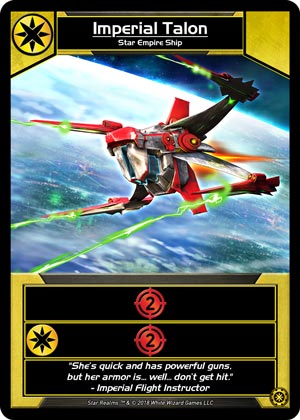
These are your bread and butter yellow cards that give you disruption and damage, but only when you pair them with yellows. At the beginning of the game, you rely on Imperial Talon to deal with bases, and Stellar Falcon’s discard won’t really slow your opponents down on its own. Damage is linear and discard is exponential- picking up even 1-2 discard cards can seriously hamper your opponent’s ability to buy cards or deal damage, and your cycling and scrapping will mean you force your opponent to discard more consistently and frequently. But discarding is an ability on less than half of yellow ships and bases, and damage is what wins games, so both are crucial to your success.
When to scrap and cycle:
Early game, you need these cards to cycle with Imperial Viper, so don’t scrap them if you can avoid it. If you find all 3 in the same hand, you might cycle one for that last drop of econ for a card in the trade row. 6 damage plus discard is nice, but something like Blob Alpha is nicer. Late game, if you picked up discard, you’ll cycle and sometimes scrap Imperial Talon. If you didn’t, start tossing Stellar Falcon to squeeze every drop of damage you can. But always make sure you look at what your opponent might have to evaluate the power of discard.
Welder Drone and Ranger
Le has a lot of decisions to make, but these cards are a lot more straightforward than they look. Welder Drone is almost never worth the damage when you can buy an Explorer and bank both for later, let alone a card in the trade row worth owning. For this reason, it’s fairly safe to lock in econ early in the turn to pair ally abilities even if you have multiple draws and decisions yet to make in your turn. Ranger follows the same logic, but isn’t as powerful or a red card, so you’ll probably hold it for later and even risk cycling it with Alignment Ingenuity.
When to scrap and cycle:
Welder Drone is usually too important as both your sole 2 econ card and as a red card to be scrapped, and too flexible to cycle over other cards. Ranger can be scrapped almost immediately if you can’t hit a scout or viper. However, in ideal scenarios, you’ll keep ranger around for 2 damage and scrap Scout Bot first.
[Scouts and Vipers]
When to scrap and cycle: Viper is the card you want to cycle and scrap first, followed by scouts. It’s better to cycle scouts for scouts, and sometimes even for a viper, just to move through your deck. Not much else to say.
Mech Battleship
This card gets shuffled into the main deck at the start of the game. And you better hope you never see it. This card is [Trash] for you and good for your opponent, and they’re more likely to be able to afford it than you. I’ve tried DESPERATELY to find a useful situation for this card, and I’m sad to say that the best utility it provides is being taken away from your opponent, even though it’s “your” card. But let’s not take my word for it and break it down:
- Scrap up to 2 cards in your hand and/or discard pile
- Draw up to that many cards, then discard that many cards.
- 6 damage.
So let’s say the first time you play this card, you have the ideal scenario that is having 2 cards in your discard pile that you want to scrap, 2 cards in your hand that you don’t want to play, and 2 cards in your deck that you do want to play. You play this card, and it’s good! Hooray!
Now another scenario: You have no discard pile (which is the case 50% of all turns for Le) and cards in your hand that you can scrap, but they’re not bad either. In this case, you’ll scrap the cards in your hand and draw, but you’ll only end up playing 4 cards that turn. Scrap is good, but is that effect worth 8 econ?
And then finally, when you’re all scrapped out, it deals 6 damage and does nothing. Every turn you play the card, it gets closer to this outcome. If you have damage cards in addition to Mech Battleship, you can probably deal enough damage to win after a couple turns. But since you bought this huge bomb, you probably don’t have many yet, and your starting deck is nowhere near enough.
Just don’t.
Explorer
:strip_icc()/pic2331056.png)
Wait, what? This card isn’t included in the Command Deck. But it might as well have Le’s name on it. Most other commanders won’t even bother buying this card, but Le will probably buy at least one of these at some point in the game. Explorers boost your econ, can be flipped on top of your deck with Scout Bot, and allow you to cycle, therefore putting a card in your discard pile for scrapping. All of these benefits without the usual drawback of taking up a card in your hand or deck thanks to Alignment Ingenuity. Ask yourself when you buy a card: Is it better than an Explorer?
General Strategy
Let’s review what we know:
- We start off behind on econ and damage
- We start off ahead on scrap and discard
- Scout bot makes 1-2 cost cards valuable
- Alignment Ingenuity makes [Trash] abilities valuable
- We have and want a lot of cycle and draw
So as Le, we want to pick up econ, damage, scrap, discard, draw, trade row scrap (since we’re behind on econ), 1-2 cost cards, big cards (because they win games), [Trash] cards, and probably healing and bases so that we don’t get rushed down. Oh wait. That’s everything. What makes Le fun, but also so difficult to play, is that like Dr. Strange at the end of Infinity War, there are myriad paths in front of you, but few will lead you to the victory screen. The only common threads in any given path to victory are 1) Minimizing your deck, 2) Setting yourself up and 3) Choking your opponent out.
Minimizing Your Deck
Your greatest boon is running through your deck and seeing the same cards over and over again. Scrap, draw, and cycle all help you do that. You don’t need more than 1-2 additional scrap cards to really bottom out, but you do need to pay attention to what kind of scrap you get. Hand scrap comes at the painful cost of losing a card play that turn. Discard scrap requires a card to be in your discard pile. Thus, it’s important that you get cycle and [Trash] cards, even sometimes at the expense of raw draw, just to make sure you can scrap. Ideally, flexible scrap is easiest to use, but discard scrap cards are usually more powerful.
Setting Yourself Up
In addition to whittling down your deck, you also need to make sure you’re setting up your future turns. You must make judicious use of scout bot in setting up your next turn based on what cards you have left in your deck. When you play a card with a [Trash] ability, consider whether or not you should or should not draw a card. Are you reaching for something? Will you cause a shuffle up that helps you pair and activate ally abilities? Remember that every [Trash] card comes with two decisions: whether you scrap the card and whether you use Alignment Ingenuity.
Choking Your Opponent
Darth Vader isn’t the only magic space man who chokes people if they look at him the wrong way. Divine Admiral Le certainly gives him a run for his money. How you do it is different every time and depends on your opponent and the trade row. Some examples are:
- Making your opponent discard a lot of cards frequently
- Using bases and healing to buffer their damage
- Choking them to death by playing damage cards and reducing their authority to zero.
What you do depends a lot on who you’re playing against, what’s in the trade row, and what they buy away from you. They WILL buy things away from you at a high priority. They’re terrified of you, and they should be. Because Le, in most cases, gets stronger as the game goes. McCready might be the Blob Alpha, but you are the Starbase Omega. If your opponent doesn’t try and stop you from getting cards that accelerate your game plan, they will be punished for it.
Conversely, every good chokehold involves throttling your opponent’s ability to accomplish their goals (usually, killing you) while you try to get to your ideal game state. You’ll need to be reactive to what your opponent is trying to accomplish- and you can afford to be, as scrapping down increases your odds to pair factions, even off-color ones.
Miscellaneous
In most games, you will buy off-color and lean into it. You can afford to do so because you have a small deck. Buying a Solar Skiff or Patrol Cutter away from your opponent with no other blue might seem bad, but even one other blue can immediately make you a dangerous threat given how small your deck is. Draw and healing, in particular, are a huge threat for your opponent. Don’t forget to use Scout Bot and shuffle ups to set up your off-color pairs.
Combining the idea of “throttling your opponents win condition” and “leaning into another color” helps us deal with the aggressive green commanders. Specifically, denying them damage cards. The best defense can be a good offense, and while an early Blob Fighter or Predator may seem weak, it’s an easy way to stop your opponent’s onslaught while building towards a deck that can cycle through itself.
Finally, since there’s so many options in front of you in a given game, to help combat analysis paralysis, let’s talk about some cards that you don’t necessarily want to buy.
- Big, clunky, heavy econ cards – Eg, Freighter, Alliance Landing, Coalition Messenger, Federation Shipyard. These cards are good situationally, but unusually aren’t worth the hefty cost for clogging up your deck.
- Heroes – It’s not that you shouldn’t buy them, but you have to be careful about doing so because they don’t go in your deck. While other commanders can weave them in pretty easily, if you don’t add cards to your deck, you risk missing bombs or being unable to take out bases. Buy them, just be careful!
- Tech – Yeah, you and what econ? Guidance is still amazing, but everything else not so much. Even Warp is a tough sell – you could buy 3 explorers with that econ and get the effect 3 times. Other tech comes at a similar opportunity cost that usually isn’t worth it, especially against green commanders.
Matchups
Divine Admiral Le
The mirror match usually depends on who gets to their chokehold faster and which one each player uses. Bases will buffer damage, discard will cripple bases, and damage will punch through discard. Speed is usually the deciding factor, and the first person to hit a critical mass game state will usually win after a couple turns
Fleet Director Nandi
One of your easier matchups, Nandi starts with 5 cards and isn’t aggressive enough to stop you from scrapping out. Their outs to winning usually involve buying a bomb or playing the yellow uno reverse card and making you discard instead. It’s not usually worth buying bases; go for discard and damage after scrap. Sometimes a cheap row scrap can keep bombs away from them, too.
High Director Valken
Another good matchup for you, as she gives you plenty of time to scrap down and choke her out. Her outs to winning the matchup are a bomb (which risks her buying econ and playing the long game) or out-scrapping and damaging you, so scrap and damage denial your your top priority. You’ll win in the late game with discard, so take your time and make sure you can deal with her bases. Remember that Valken’s greatest strength is controlling the length of the game, so make sure you pay close attention and don’t get caught off-guard.
Overlord Newburg
Newburg is unique in that he can punch cards away from you while focusing on buying damage to rush you down. Buying healing cards away from him can throttle his passive ability and reduce incoming damage while giving you time and econ to set up. Trying to set up for a bomb is almost impossible with his two innate row scrap, but always be on the lookout for what’s in their discard pile to see if you find the opening. Both of you will counter-buy frequently. Sometimes you’ll lose the row-scrap lottery, sometimes you’ll get an early scrap and take off.
Hive Admiral McCready
Your archnemesis, Play-All Paul, is going to give you a really rough go. His damage output is insane, he can pop his gambit and beat you to a bomb, and the game is too fast for you to stabilize in most cases. Only buy scrap that does damage and prioritize damage. Blue cards that heal and deal damage, green cards to stop him, and yellow cards that both deal damage and cycle are the key. And luck. A lot of luck. Don’t hesitate to go for a riskier play. On the slim chance it comes up, a 2-cost healing card like Cutter that you can repeatedly scout bot can be the difference in winning and losing.
Biolord Walsh
Walsh doesn’t have as much damage as McCready or row scrap as Newburg, so you might think you have time to set up or stabilize. But be careful, what he can do is buy a huge base and then rush you down. Be cognizant of where your damage is so that you can try and avoid the base staying out for more than one turn. Buying damage to take out bases and slow his onslaught is important. You can also buy bases to slow his damage and it will surprisingly work out for you in the late game. When he starts choosing damage on Welder Drone, he’s going in for the kill. Figure out the game pace and act accordingly.
High Admiral Jochum
The big man himself, Jochum’s 7-card hand makes him the sole challenger to your late game power. And unfortunately, that’s a battle he’ll win. He can out-speed you with scrap, so that’s your first priority, along with potentially “that one econ card” he wants to gambit for to buy the bomb in the trade row. You’re in a good spot, if you can beat him to a bomb with Scout Bot, but it won’t happen frequently. Most of the time, you’ll have to ignore all blue cards and do your best McCready impression to rush him down. The good news is, you have a better chance against him than most commanders. McCready is probably the best to take him on, but you’re not far behind. Still, the matchup is not in your favor, so you probably have to make a risky play to win.
Conclusion
There’s more to write about Le than could ever be put into words. The only way to truly understand is to get a feel for it yourself. Play a lot of practice and try a lot of different lines. Get comfortable losing a lot at first while you try and figure out what you should be doing. With time, you will slowly begin to understand, on a conscious or unconscious level, what you need to do to win.
Go forth, and study LeDo: The Way of Le.


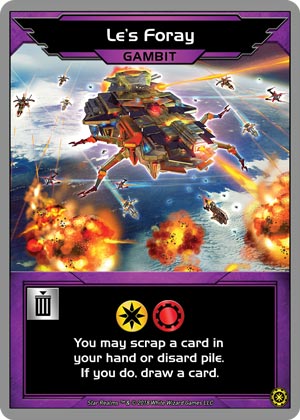
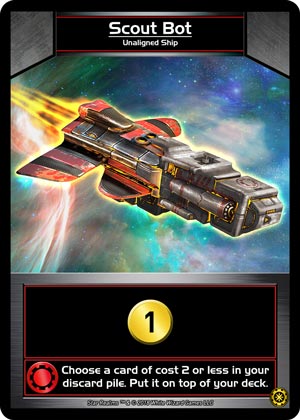
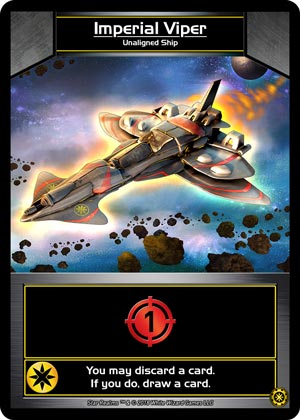
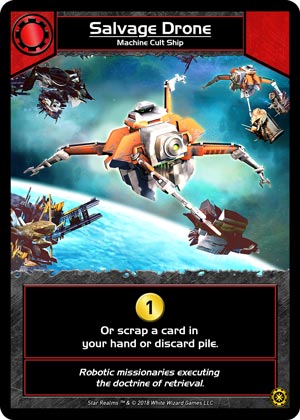
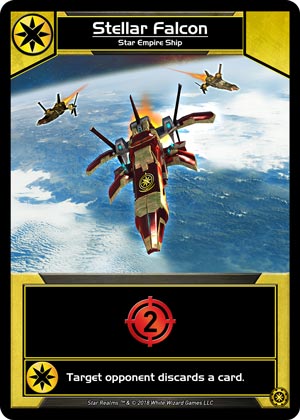
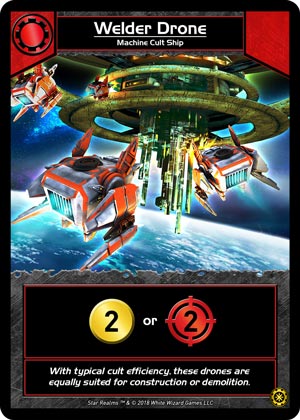
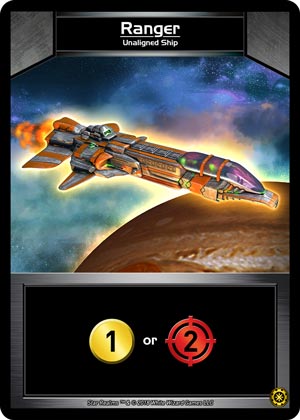








Fantastic job with this, Connor! Great read.
LikeLike
Pingback: Command Deck Strategies Part 7: The Coalition and High Director Valken | Megahaulin Blog for Star Realm Strategy